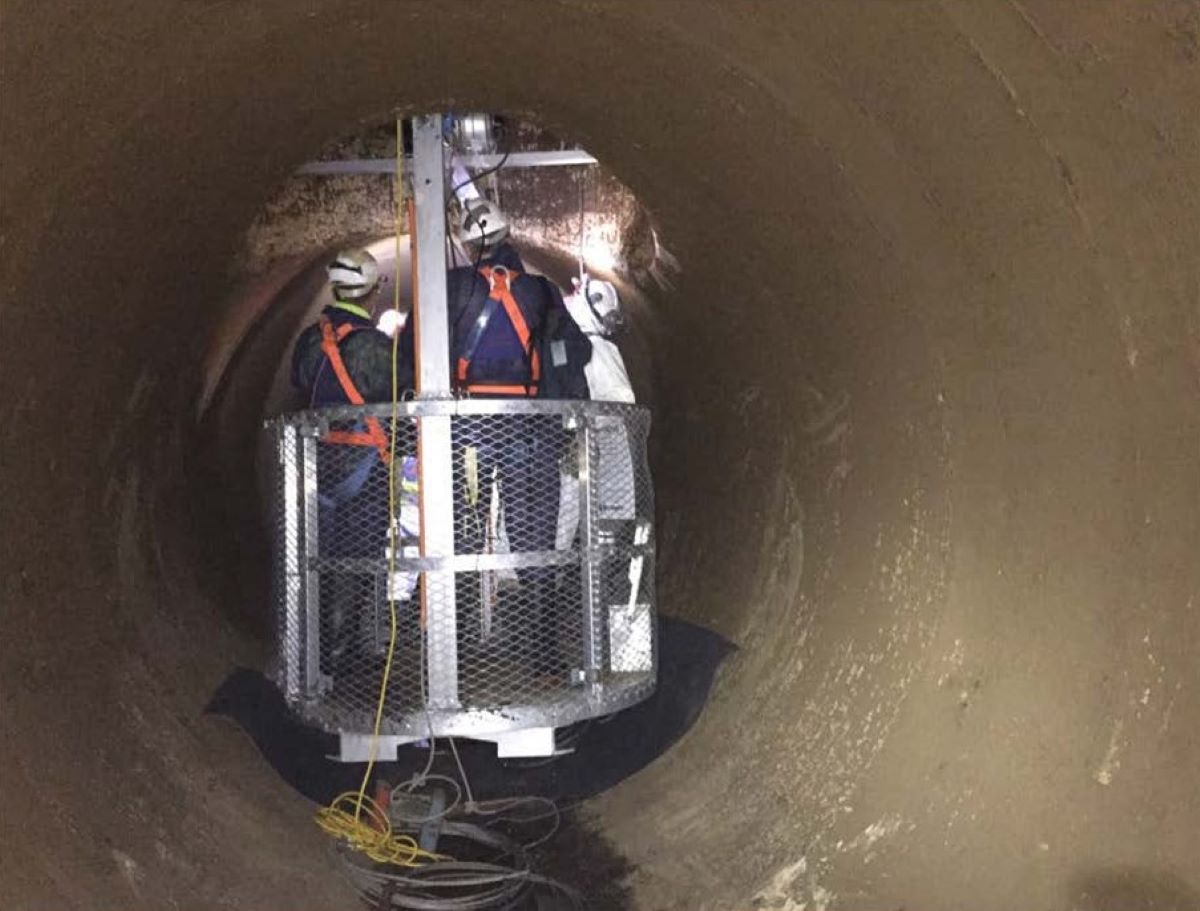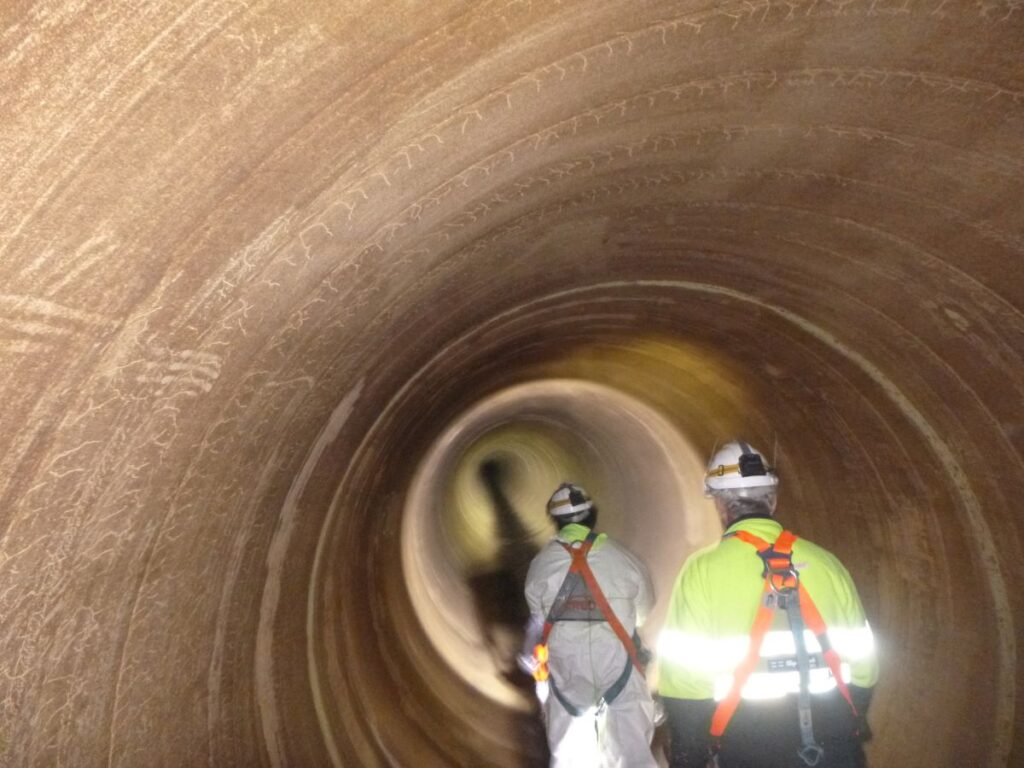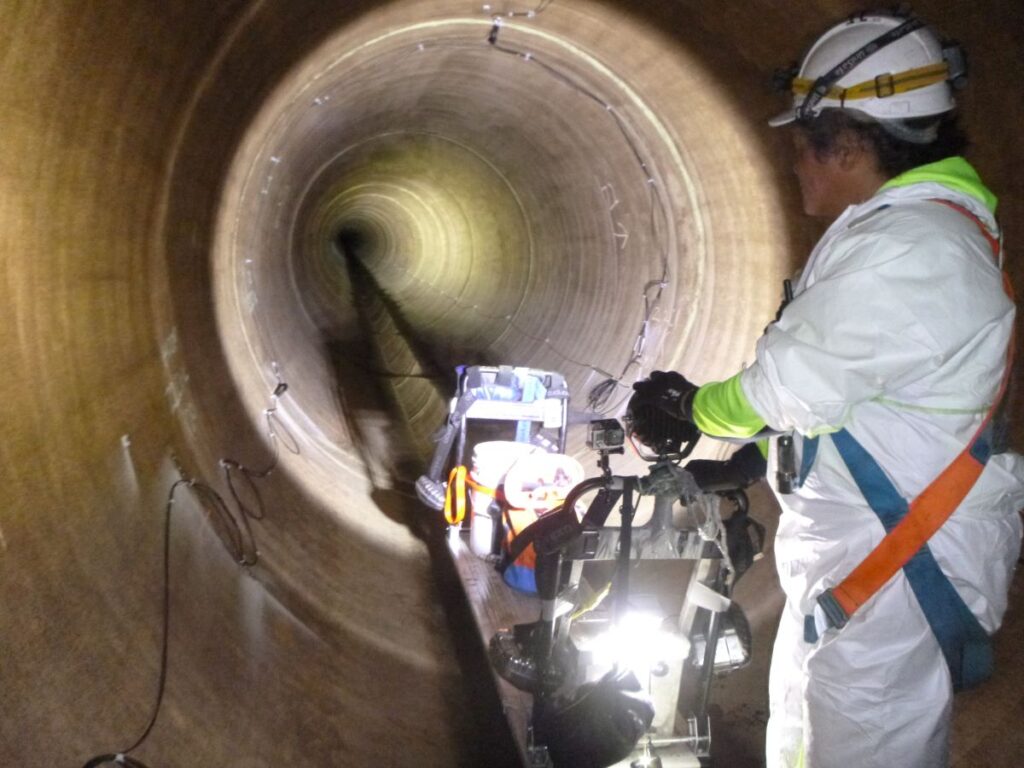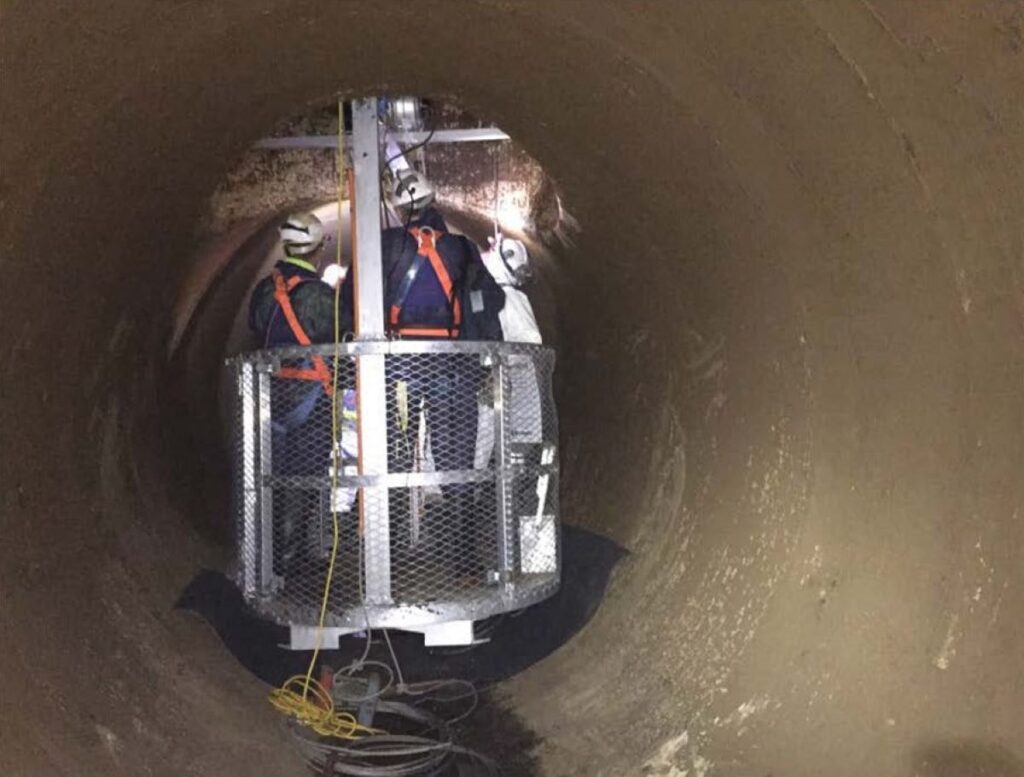
City Tunnel’s Internal Condition Assessment
Introduction
Managing critical infrastructure like water supply pipes requires proactive maintenance to ensure reliability and longevity. This case study examines the processes and technology we implemented to gain access and inspect the City Tunnel, a crucial component of Sydney’s water distribution network.
The assessment aimed to pre-emptively manage infrastructure, prevent failures, enhance operational efficiency and comply with evolving regulatory standards.
The Challenge
The team faced several challenges throughout the project. There was a need to identify sections that require repair or replacement before potential failures occur. They also needed to address localised issues promptly to prevent escalation into significant failures, minimising operational disruptions.
It is essential to assess cement-lined pipes for internal lining deterioration, critical for maintaining water quality and structural integrity. As well as conducting assessments to meet regulatory requirements and ensure adherence to operational standards.

Solution
A comprehensive solution was implemented to address these challenges.
The project began with the isolation of 16 kilometres of pipeline by strategically closing valves. This isolation allowed for controlled access, crucial for conducting thorough assessments and executing necessary maintenance activities.
Dewatering techniques, including the use of wellpoints and deep wells, were employed to remove water from the isolated sections. This step was essential to create a safe working environment inside the pipe, enabling personnel to perform inspections and repairs effectively.
A detailed ventilation plan was developed and executed to ensure a safe working environment within the confined space of the pipe. A forced air ventilation system was installed, with ducts and mechanical equipment that served to regulate air quality and mitigate potential hazards such as airborne contaminants.
The system included provisions for push-pull ventilation, which effectively circulated air to maintain safe atmospheric conditions. Special attention was given to controlling hazardous chemicals and implementing regular maintenance procedures to uphold operational safety and manage air quality effectively.
To facilitate safe entry and exit for maintenance personnel, custom-made swinging stages or personnel lifts were designed, built and installed. These bespoke platforms were suspended from multiple points within the pipe, equipped with necessary safety features. We also wrote a comprehensive rescue procedure to manage emergencies effectively. The design and implementation of this access equipment ensured that previously inaccessible sections of the pipe could be safely accessed and inspected.
Finally, a robust communication network spanning the 16-kilometre length of the pipe was established to facilitate seamless information exchange. Two-way radios or wireless headsets enabled communication among team members, allowing real-time updates on work progress and safety concerns.
Externally, radio or phone connections were utilised with standby personnel to ensure continuous support and coordination. An integrated communication hub served as a central control point, managing all communications and enabling swift responses to emergencies through an established alert system.


Outcome
The implemented access solutions yielded significant outcomes.
- Enhanced Safety and Efficiency: Provided a safe working environment through effective ventilation and access solutions, minimising risks associated with confined space operations.
- Accurate Condition Assessment: Successfully conducted internal inspections to identify deteriorated linings or structural weaknesses, enabling data-driven decision-making for maintenance strategies.
- Compliance and Long-term Planning: Ensured adherence to regulatory standards and operational requirements, enhancing infrastructure resilience and supporting long-term planning efforts.
Stakeholder Satisfaction: Demonstrated commitment to environmental and community safety by managing operational impacts and fostering transparency and accountability.
Conclusion
The internal condition assessment of the City Tunnel underscores our dedication to innovation, safety and sustainability. By overcoming complex challenges with tailored solutions, we safeguarded critical water supply infrastructure and set a benchmark for excellence in asset access and inspection.
Moving forward, these efforts will guide our approach to preserving and enhancing infrastructure resilience, benefiting communities and stakeholders alike.